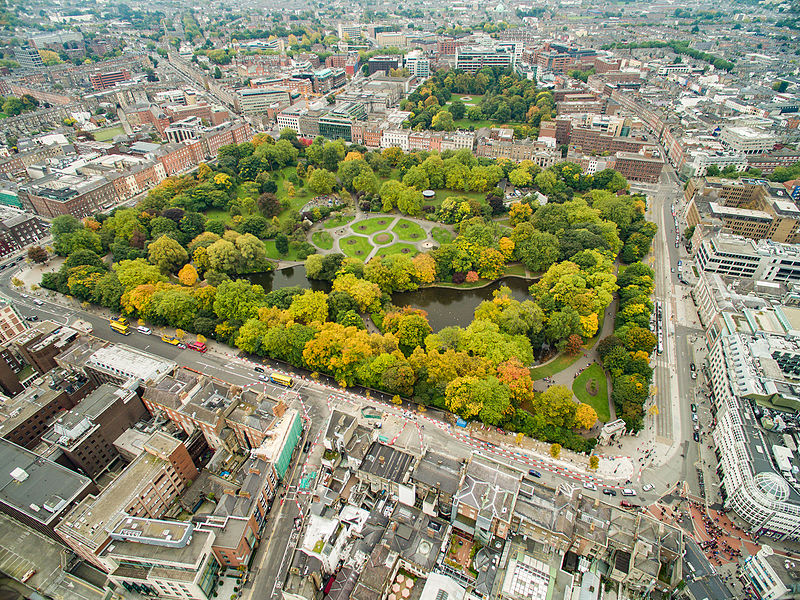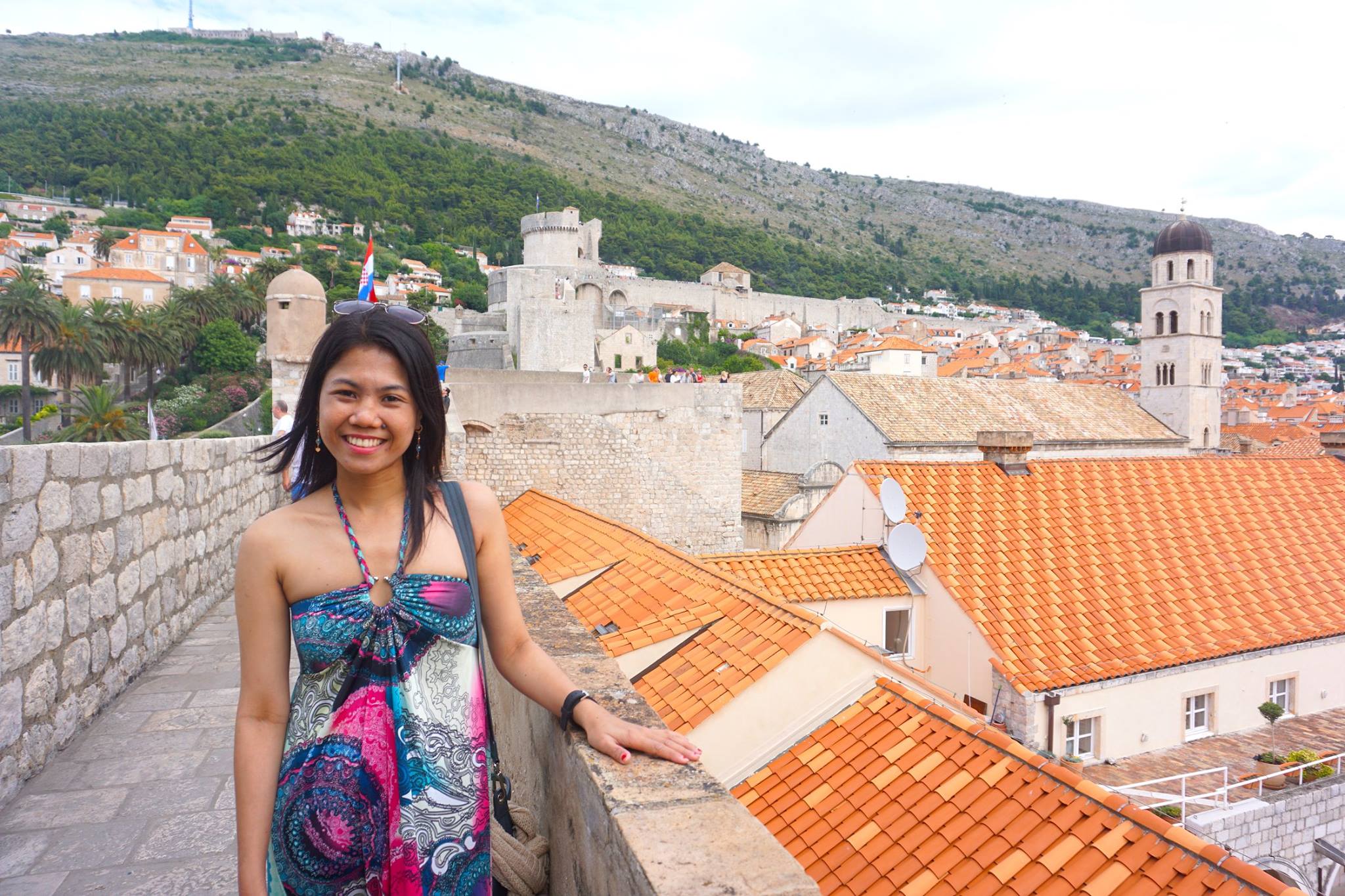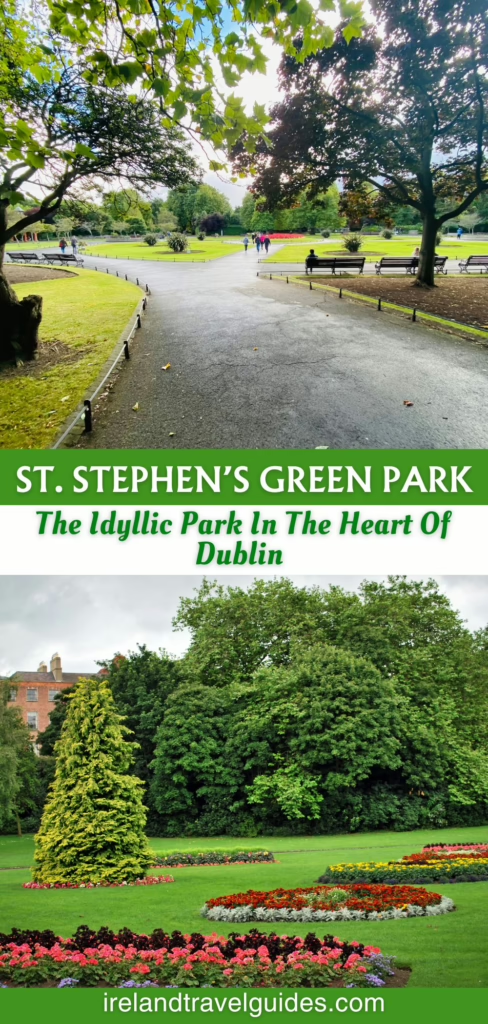St. Stephen’s Green Park is without a doubt a favorite among most Dubliners and visitors to the city alike. This idyllic park is located right in the heart of Dublin and is close to most of its top attractions.
St. Stephen’s Green Park: The Idyllic Park In The Heart Of Dublin

The Green is the ideal hideaway when you want to take a break from exploring the Irish capital. St. Stephen’s Green Park itself has plenty of interesting sights within its premises such as various historic monuments, lovely gardens, and even a duck pond. It is one of the best parks and gardens in Dublin.
Still, this green space is a great place to relax, enjoy a leisurely stroll or even know more about Dublin’s history.
Aside from the monuments, St. Stephen’s Green in itself has a fascinating story to tell.
St. Stephen’s Green Park History
Several centuries ago, The Green, was far from the city center sanctuary that we see today. The park used to be a marshy common, which was used for the grazing of sheep and cattle.
This area was also the venue for public executions and witch burnings.
All that changed in 1664, when the local government saw an opportunity to gain much-needed revenues. The area where St.Stephen’s Green was enclosed and the land around it was put up for sale. The tree-lined enclosure soon had buildings and residences around it, which then gave birth to St. Stephen’s Green.
As these structures sprung up, the green space became a sort of private park for those wealthy residents who lived around it. Despite the many attempts to open the park to the public, it didn’t happen until two centuries later.
In 1887, A.E. Guinness (of the Guinness family) urged the city government to open the park to all. Guinness even paid to make improvements in the park, which was officially opened to the public in 1890.
Since then, St. Stephen’s Green became a witness to recent Dublin history. It even became a battleground during 1916 Rising. Rebel forces set up camp in the park, dug up trenches and blocked off the toads. St. Stephen’s Green was used as some sort of stronghold against the British forces.
However, a ceasefire was soon called by both sides to allow groundkeepers to feed the ducks in the Lake inside the park.
Ireland’s independence was declared a few years after. The Green, meanwhile, became one of the most visited parks in Dublin. St. Stephen’s Green got its name from a church and leprosy hospital which were found in the area during the 13th century.
Today, the 22-acre St. Stephen’s Green is the place to be if you want to take a break from sightseeing around Dublin center or shopping along Grafton Street. Here, you may relax on a shady bench, watch the ducks on the lake or stroll through the Victorian gardens.
You may also enjoy a picnic here on sunny days.
Around the park, you’ll also see statues and memorials honoring personalities who became part of The Green and Ireland’s history as a whole.
You’ll find the Yeats Memorial Garden that features a sculpture by Henry Moore, as well as a bust of James Joyce.
There is also a memorial dedicated to the Great Famine that happened from 1845 to 1850. The center of the park, meanwhile, has a bronze bust of Countess Markievicz wearing the Irish Citizen Army uniform.
The German people also contributed a lovely fountain to the park. It was a gift to Ireland who sheltered five hundred children in a project called Operation Shamrock.
There are also statues of Theobald Wolfe Tone, head of the 1798 rebellion, and latter rebel leader Robert Emmet. Of course, St. Stephen’s Green has a seated statue of the man who made the park open to the public — Arthur Edward Guinness.
Aside from all these curious attractions, the park also hosts free outdoor concerts, especially during summer.
Like it? Pin it!

Hi, I’m Christine – a full-time traveler and career woman. Although I’m from the Philippines, my location independent career took me to over 60 countries for the past 12 years. I also lived in 4 continents – from the Caribbean, South East Asia, Africa and now in Europe. But despite living in several countries, my love for Ireland remains the same. A country that had been a part of my life since I was 14 because of my love for Irish music and bands. Ireland Travel Guides was born because of this passion and hopefully, in some little ways, this website will be able to help you on your next trip to Ireland.




Dublin Or Belfast: Which City Is Better? - Ireland Travel Guides
Sunday 19th of September 2021
[…] St. Stephen’s Green Park (and the ducks!) […]
Where To Stay in Dublin, Ireland - Ireland Travel Guides
Monday 26th of July 2021
[…] also has free tea and coffee making facility and a TV. It close to Ireland’s National Gallery, St. Stephen’s Green, and O’Connell Street. Irish and international cuisines are also served in the […]
3 Days in Dublin: Itinerary With Maps and Tips - Ireland Travel Guides
Monday 26th of July 2021
[…] Saint Stephen’s Green is just across from the Little Dublin Museum, which should be your next stop. […]
10 Free Things To Do In Dublin, Ireland - Ireland Travel Guides
Friday 25th of June 2021
[…] you want to connect with nature without leaving the city, head to St. Stephen’s Green, a well-manicured urban park. Though the land was once the setting of public executions, the green […]
10 Best Museums in Dublin, Ireland - Ireland Travel Guides
Friday 4th of June 2021
[…] TripAdvisor, your last stop on your itinerary is the best. The people’s museum is situated near St. Stephen’s Green in Dublin, and once you avail of a ticket, an expert will guide you through over a collection of […]